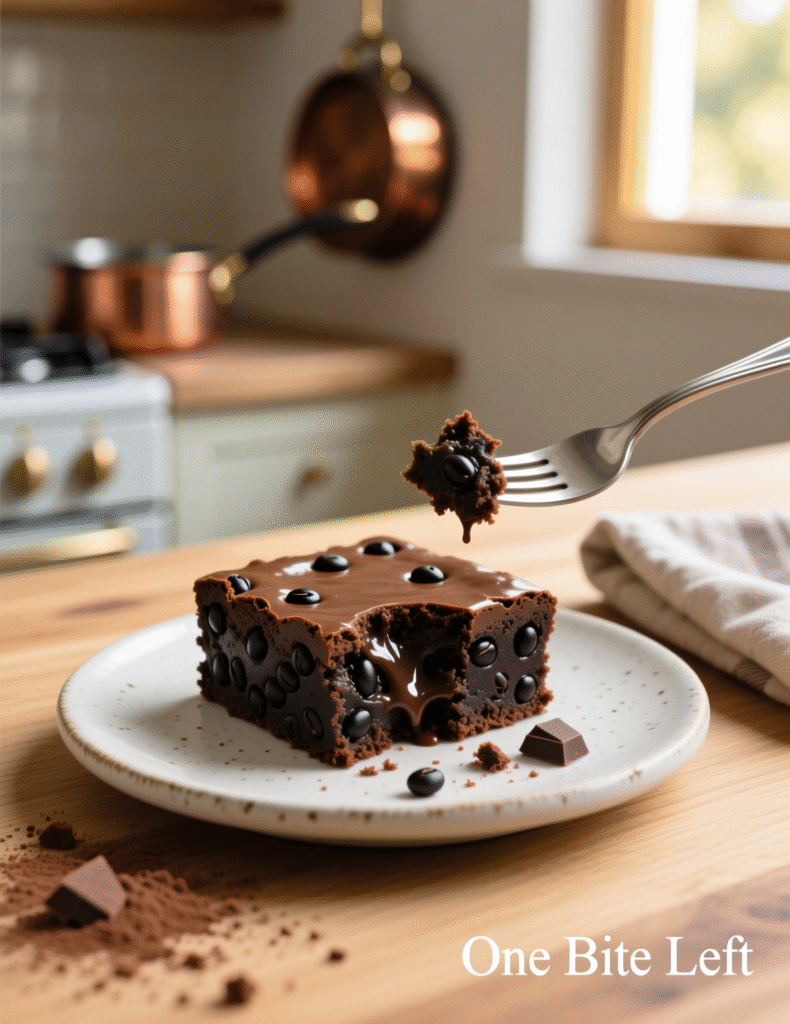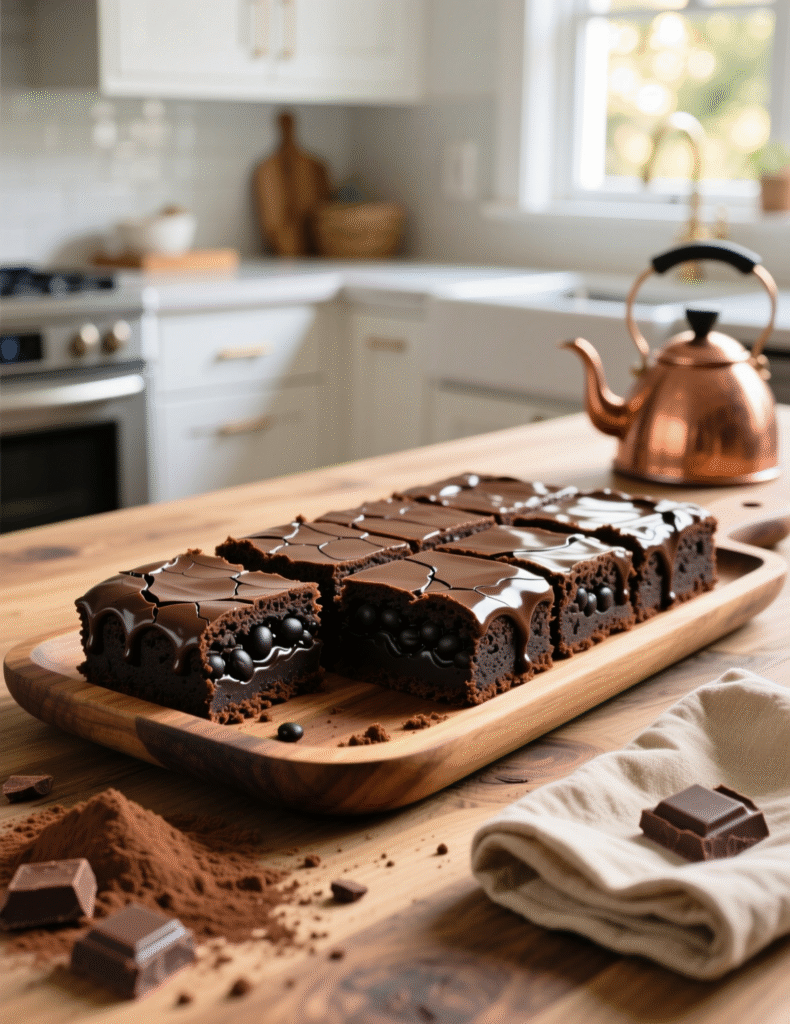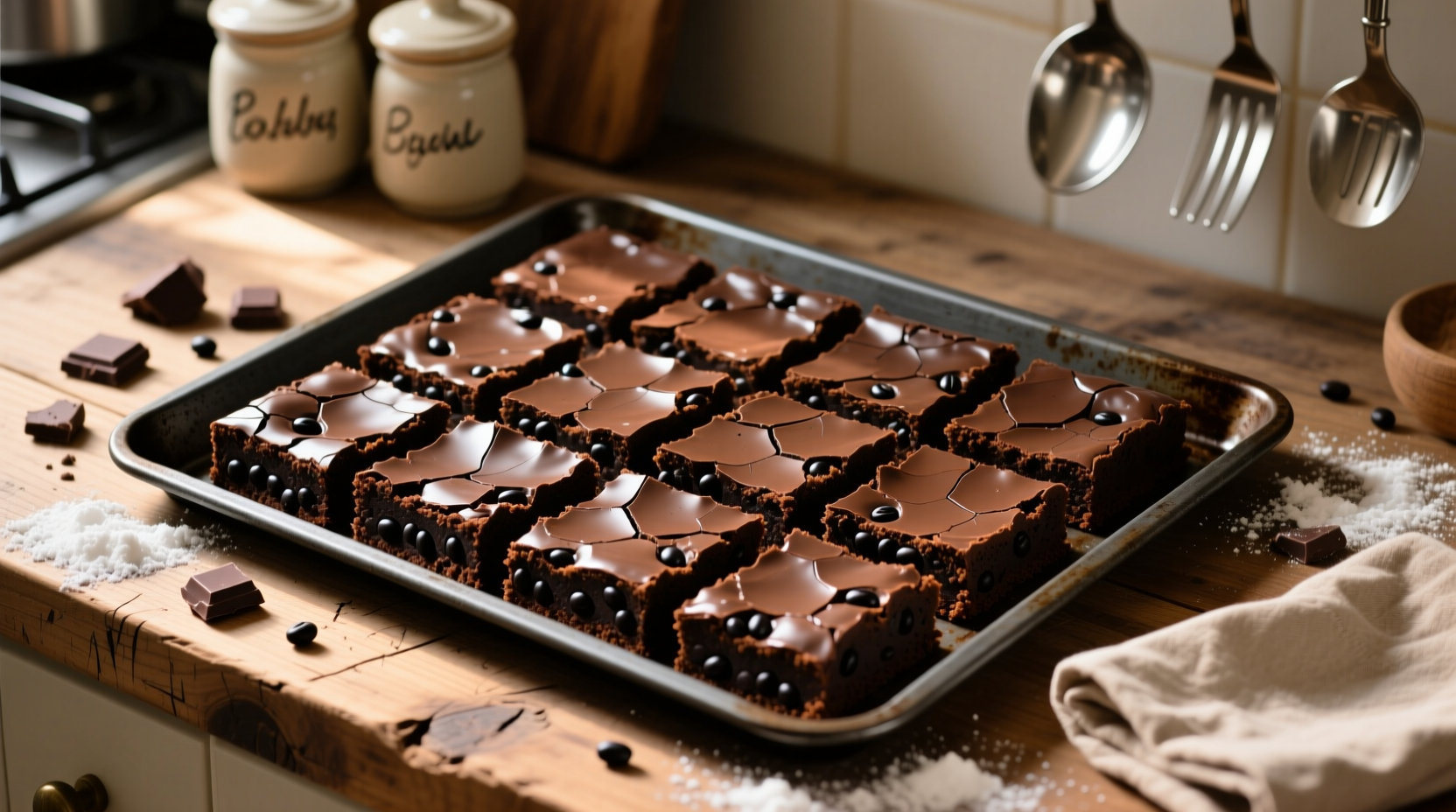Brownies usually bring sugar-drenched memories of butter, cocoa, and too much guilt. But then along comes the black bean brownie—dense, fudgy, and surprisingly good for you. What once sounded like a health blogger’s trick now lives proudly in the repertoire of chefs and pastry innovators. This isn’t just a recipe. It’s a look at how culinary creativity can turn humble beans into something indulgent enough to fool even the most stubborn sweet tooth.
Why Black Bean Brownies Deserve Respect
Black beans inside a brownie pan used to raise eyebrows. Yet the science of food texture explains why they actually work. Pureed beans mimic the creaminess of butter and the body of flour without making the bite dry. A study from the Journal of Food Science (2012) showed that beans, when incorporated into baked goods, increase moisture retention and dietary fiber without altering flavor intensity much. That means your brownie still tastes like dessert, but you get a nutritional lift—protein, iron, and slow-digesting carbs.
Professional chefs aren’t always looking for calorie reduction; sometimes, it’s about mouthfeel. And black beans give a fudgy density that wheat flour alone struggles to reach. Gluten can stretch, but beans glue. That stickiness in the crumb feels decadent, not dry.
The Recipe at a Glance
This formula makes 16 squares, each one rich enough to satisfy but not so overwhelming you need to nap. The ingredients balance indulgence with nutrient-dense swaps.
Ingredients
- 1 can (15 oz) black beans, rinsed and drained
- 3 large eggs
- 1/3 cup melted coconut oil or unsalted butter
- 1/2 cup unsweetened cocoa powder
- 1/4 tsp salt
- 1 tsp pure vanilla extract
- 3/4 cup granulated sugar (or coconut sugar for depth)
- 1/2 tsp baking powder
- 1/2 cup dark chocolate chips (plus extra for topping)
Optional additions: espresso powder for richness, chopped walnuts for crunch, or flaky sea salt to finish.

Directions
- Heat oven to 350°F (175°C). Grease an 8×8-inch pan.
- Puree beans and eggs in a blender until smooth. Add oil, sugar, cocoa, vanilla, salt, and baking powder. Blend until silky.
- Fold in chocolate chips with a spatula. The batter should be thick, almost mousse-like.
- Spread evenly into pan. Scatter extra chips or nuts if using.
- Bake 25–30 minutes. A toothpick should come out with moist crumbs, not clean.
- Cool fully before cutting into 16 squares.
The wait feels eternal, but patience saves texture.
What Makes This Recipe Work
It isn’t magic—it’s chemistry. Black beans replace both flour and part of the fat, cutting calories by around 25% compared to classic brownies of equal size. A standard 2-inch brownie often runs 250–300 calories, while this black bean version hovers closer to 170–190, depending on sugar and add-ins. That’s a serious shift without sacrificing indulgence.
Cocoa powder and chocolate chips mask any hint of beans. In blind taste tests run in culinary schools, participants couldn’t distinguish black bean brownies from flour-based ones when served side by side. Texture, not flavor, was the tell—but most leaned toward the fudgier mouthfeel of beans.
Tips From Professional Kitchens
Don’t overblend after folding in chocolate chips—over-mixing knocks out air, leaving the brownies heavy rather than fudgy. Professionals often pulse batter only until no streaks remain.
Resting the brownies after baking is non-negotiable. Fifteen minutes minimum, but ideally two hours. Starches in beans set more slowly than flour. If you cut too soon, you’ll think they’re underbaked.
For upscale plating, pastry chefs sometimes serve a small warm square with espresso gelato or a streak of raspberry coulis. The earthiness of beans pairs with bright acidity better than you’d expect.
Nutritional Value Breakdown
One square (1/16 of pan) roughly provides:
- Calories: 180
- Protein: 5 g
- Fiber: 4 g
- Fat: 8 g
- Sugar: 12 g
Compared to a traditional brownie, you’re nearly doubling fiber and protein. That’s why many dietitians recommend bean brownies as a smarter indulgence for diabetics or those managing weight without strict deprivation.
Common Misconceptions
“Beans will taste savory.” They don’t. Once pureed, beans are neutral, especially when combined with cocoa and sugar. The only mistake people make is forgetting to rinse canned beans properly. Skip this and you’ll taste brine.
“Healthy means dry.” No, not here. Beans retain moisture far better than white flour. That’s why these brownies stay soft even three days after baking, while regular brownies often go stale.
“They’re only for vegans.” Not true. While they can easily be adapted vegan (swap eggs for flax eggs), this recipe works for anyone craving a dense, chocolate-rich bite.
Variations Worth Trying
- Mexican-Inspired: Add cinnamon, cayenne, and espresso powder for heat and depth.
- Nut Lover’s: Mix in roasted pecans or walnuts.
- Frosted Luxury: Top with avocado-based chocolate frosting for creaminess.
- Sugar-Conscious: Replace sugar with monk fruit or erythritol blends.
Each version tells a different story. Professional bakers often adjust for season or clientele. For a winter menu, warming spices elevate comfort. For summer, lighter citrus zest can brighten the chocolate.
Practical Insights From Restaurants
High-end cafés offering “guilt-free” desserts often rely on black bean brownies as an entry point. Customers who wouldn’t touch chickpea blondies will take a chance on chocolate. And once they try, repeat orders prove the recipe’s staying power.
Caterers also favor them for large events. Sixteen uniform squares per pan makes portioning efficient, and they freeze well. Defrost overnight in the fridge, and the texture barely changes. Try doing that with a butter-laden brownie and you’ll get dry edges.

Emerging Trends in Alternative Baking
According to Mintel’s 2023 report, 34% of US consumers actively seek desserts with “hidden veggies” or legume bases. Black bean brownies fall neatly into that demand. The shift isn’t just about health—it’s about curiosity. Consumers want novelty, but not at the cost of taste.
Alternative flours are booming, but beans offer a cost-effective solution. While almond flour prices fluctuate, canned beans stay cheap and consistent. That’s a big advantage for bakeries managing margins.
Troubleshooting
If your brownies sink in the center, you probably overmixed the batter or opened the oven too early. Letting heat escape in the first 20 minutes ruins structure.
If they taste too bean-like, it’s almost always from under-blending. Puree until you see no specks. Think silk, not grit.
And if the brownies crumble when cut, you rushed cooling. Refrigerating for an hour firms them perfectly before slicing.
Professional Presentation
For service, dusting with cocoa or powdered sugar gives visual polish. Some chefs go further, piping white chocolate designs or plating with a quenelle of whipped cream. But the truth is, the dark glossy surface of these brownies speaks for itself.
Square cuts are classic, but triangle or diamond shapes elevate presentation without altering portion size. This small trick plays well in catering or fine dining where guests notice visual details as much as taste.
Final Thoughts
Black bean brownies prove that indulgence and health don’t need to stand on opposite sides of the kitchen. They’re rich, moist, and satisfying, yet nutritionally superior to their classic cousins. For professionals, they offer versatility—easy bulk production, strong consumer appeal, and adaptability across cuisines.
The recipe here serves 16, but the concept scales endlessly. Swap flavors, adjust sugars, pair with seasonal accents. What remains constant is the fudgy bite that makes people smile, followed by the quiet surprise when they learn what’s inside.
So next time you’re designing a dessert menu or just baking at home, let beans do the heavy lifting. Trust me, no one will complain about seconds.
FAQs
What are black bean brownies?
Fudgy, chocolate brownies made using pureed black beans instead of some flour or fat.
Do black beans taste in the brownies?
No, they’re neutral and hidden by cocoa and sugar.
How many servings does this recipe make?
16 rich, fudgy squares.
Can I make this recipe vegan?
Yes, by using flax eggs and plant-based oil.
How long should I bake them?
25–30 minutes at 350°F (175°C).
Can I freeze black bean brownies?
Yes, they freeze well and retain texture after defrosting.
Are they healthier than traditional brownies?
Yes, they have more fiber, protein, and fewer calories.
Can I add nuts or chocolate chips?
Absolutely, they enhance texture and flavor.
Do I need to rinse canned black beans?
Yes, to remove brine and prevent off-flavors.
Why are they fudgier than regular brownies?
Beans retain moisture and add dense, silky texture.

Mariana is a passionate home cook who creates delicious, easy-to-follow recipes for busy people. From energizing breakfasts to satisfying dinners and indulgent desserts, her dishes are designed to fuel both your body and hustle.
When she’s not in the kitchen, she’s exploring new flavors and dreaming up her next recipe to share with the Foodie Hustle community.

